Can an EDLP strategy help independents as the multiples’ c-stores pile on the pricing pressure, asks Siân Harrington
With Morrisons’ takeover of Safeway, every day low pricing is about to become the norm in the multiples. Even Sainsbury has plans to be more price-competitive from the summer, as group chief executive Sir Peter Davis told delegates at a conference.
But as the multiples continue their drive into c-store formats, what will it mean for the independents? John Sharpe, MD of Nisa-Today’s Central Distribution Service, predicts a “bloodbath”. His pessimism may prove well-founded. To date, independents have not been able to get anywhere near the major multiples on price. Typically, customers are paying around 9% more in managed chains and up to 15% more in other independent channels than they pay in Tesco or Asda.
This is all very well if shoppers are comparing c-stores’ prices to those in their main supermarket. As Harris International Marketing’s Convenience Tracking Programme shows, customers are prepared to pay 10-14% more in c-stores. This same research also states price is number four in the list of what is important to c-store shoppers after staff friendliness, speed of service and product availability and just ahead of wide product range.
But if Tesco and Sainsbury succeed in rolling out c-stores to the extent they have indicated, the landscape will change radically. Already the events of the past year have had a major impact on the c-store retail environment, with Sainsbury the latest to say its desire for scale in this sector means a wishlist of around 1,000 stores, starting with its purchase last week of Bells. And with Tesco’s acquisition of T& S and Adminstore, many independent c-stores either have, or are about to have, a Tesco Express on their doorstep. Their customers will no longer be comparing prices to those of a large Tesco supermarket, they will be comparing them to prices in the local Tesco Express. And the premium there is only between 3-5%.
“Tesco Express has raised price as a critical issue,” says Jacksons Stores trading director Richard Lancaster. “It is no longer about being 10-14% more expensive than the supermarkets, it is about being 10-14% higher in price than one of the multiples’ c-stores located nearby. Customers may have accepted the difference when it was superstore to c-store, but not now,” he adds.
Lancaster argues that in this new trading environment, customers are more sensitive to price than the HIM research indicates. “Our internal consumer panel research shows price is the most important of the critical five. Having it at number four gives suppliers a reason to disinvest and we become a prop for the multiples.”
He believes managed independent chains need to be within 10% of Tesco Express on price. But, he says, this would put many products in negative margin territory and a lot more in low single figures. This, coupled with rapidly rising costs in the convenience sector thanks to the minimum wage, increased insurance, pensions, national insurance costs and the like, makes being price-competitive difficult. The problem is acute in certain categories, such as core canned and packaged products. “In core grocery the gap of 11% of three years ago has been increased further as EDLP has bitten into suppliers,” says Lancaster.
And while convenience operators are not generally as price-disadvantaged in licensed, impulse and tobacco, margins are still being squeezed. Margins from one major tobacco brand have fallen 3% while traditionally high margin items like crisps and confectionery show little signs of margin growth.
So how can independents survive? Is it possible for them to adopt EDLP strategies?
David Sands, MD of the eponymous c-store chain, is sceptical. “If we cut margin at the same time as suffering increasing costs, it would be difficult to justify. I am not sure EDLP would be effective.”
But the EDLP philosophy is beginning to seep in. As The Grocer reported last week, Nisa-Today’s is to introduce a consumer leaflet featuring an element of EDLP in May. This is part of a number of options for Nisa-Today’s retailers, enabling them to pick the best for their store offer. “The Extra option will carry an element of EDLP,” explains Sharpe. “We will be rotating through products with a 52-week-a-year low price.”
But Sharpe concedes his buying teams are having to work hard to convince suppliers. This is the crux of the matter. Calls for a level playing field on price have been plentiful, notably from Musgrave UK executive chairman Eoin McGettigan.
But, on the whole, they have fallen on deaf ears. After all, as Lancaster says, suppliers use independents to fund deep discounts to the big four.
But the stark fact is that, if manufacturers do not start supporting independents more, there may not be an independent sector left. From where will they get their margins then? “Unless they arrest this now, they are in trouble in the future,” states Lancaster.
He believes manufacturers need to understand convenience retailers’ new cost base and to be more realistic about the both the margins they seek to achieve and those that retailers need to achieve.
“We need to achieve margins in the late 20-30% range to show the correct shareholder return,” says Lancaster. “We would need a 5-7% move forward in margin in every category to achieve this.”
If suppliers were to work closely with disciplined, managed c-store chains and jointly invest in key products to ensure more competitive price points, thereby closing the gap with Tesco, they would be rewarded with greater volume, believes Lancaster.
To prove the point, Jacksons has been testing a part-EDLP strategy on about 30 lines. With Procter & Gamble, it has reduced Pampers from £6.75 to a permanent £5.99. This compares to about £5.65 in Tesco. The result? Immediate sales uplifts of 35%.
Similar negotiations with Walkers resulted in a six-pack of crisps dropping from £1.19 to a permanent 99p compared to Tesco’s 92p. According to Lancaster, there has been a 100% sales uplift since launch. The strategy is not at the expense of promotions and Jacksons still expects to reduce these two SKUs further on promotion. But, he says: “We are trying to avoid the Safeway issue of too-high prices and deep discounts, with no sales off-promotion. We need to ensure there is no insultingly high pricing on other products as a result of suppliers to c-stores saying they cannot get within 10% of the price at which they supply to Tesco.”
While the first results from Jacksons are encouraging, Sands is not wholly convinced. “I am not sure if the sector could increase volume sufficiently for EDLP,” he says. “We can’t take the same cost out of the supply chain via efficiencies such as factory gate pricing because of our fragmentation. It would be hard to justify getting the same cost price as the multiples to finance EDLP.”
He also questions whether convenience shoppers know the price of products. “Beyond two to three KVIs it is a struggle to say what products should be on EDLP.
“We need to work harder on the question of price perception and value.”
However, even David Sands takes an EDLP-type position on some grocery lines and Sands concedes better supplier terms are a necessity. “Switched-on suppliers realise there may not be much of an independent sector in 20 years if things go on as they are.”
The problem, as Sharpe points out, is that some suppliers are more concerned about the reaction from Tesco and Asda if they were to offer better terms to independents than they are about the state of the independent sector. But if they do not want to see retailing dominated by four or five major players, they may not have a choice.
With Morrisons’ takeover of Safeway, every day low pricing is about to become the norm in the multiples. Even Sainsbury has plans to be more price-competitive from the summer, as group chief executive Sir Peter Davis told delegates at a conference.
But as the multiples continue their drive into c-store formats, what will it mean for the independents? John Sharpe, MD of Nisa-Today’s Central Distribution Service, predicts a “bloodbath”. His pessimism may prove well-founded. To date, independents have not been able to get anywhere near the major multiples on price. Typically, customers are paying around 9% more in managed chains and up to 15% more in other independent channels than they pay in Tesco or Asda.
This is all very well if shoppers are comparing c-stores’ prices to those in their main supermarket. As Harris International Marketing’s Convenience Tracking Programme shows, customers are prepared to pay 10-14% more in c-stores. This same research also states price is number four in the list of what is important to c-store shoppers after staff friendliness, speed of service and product availability and just ahead of wide product range.
But if Tesco and Sainsbury succeed in rolling out c-stores to the extent they have indicated, the landscape will change radically. Already the events of the past year have had a major impact on the c-store retail environment, with Sainsbury the latest to say its desire for scale in this sector means a wishlist of around 1,000 stores, starting with its purchase last week of Bells. And with Tesco’s acquisition of T& S and Adminstore, many independent c-stores either have, or are about to have, a Tesco Express on their doorstep. Their customers will no longer be comparing prices to those of a large Tesco supermarket, they will be comparing them to prices in the local Tesco Express. And the premium there is only between 3-5%.
“Tesco Express has raised price as a critical issue,” says Jacksons Stores trading director Richard Lancaster. “It is no longer about being 10-14% more expensive than the supermarkets, it is about being 10-14% higher in price than one of the multiples’ c-stores located nearby. Customers may have accepted the difference when it was superstore to c-store, but not now,” he adds.
Lancaster argues that in this new trading environment, customers are more sensitive to price than the HIM research indicates. “Our internal consumer panel research shows price is the most important of the critical five. Having it at number four gives suppliers a reason to disinvest and we become a prop for the multiples.”
He believes managed independent chains need to be within 10% of Tesco Express on price. But, he says, this would put many products in negative margin territory and a lot more in low single figures. This, coupled with rapidly rising costs in the convenience sector thanks to the minimum wage, increased insurance, pensions, national insurance costs and the like, makes being price-competitive difficult. The problem is acute in certain categories, such as core canned and packaged products. “In core grocery the gap of 11% of three years ago has been increased further as EDLP has bitten into suppliers,” says Lancaster.
And while convenience operators are not generally as price-disadvantaged in licensed, impulse and tobacco, margins are still being squeezed. Margins from one major tobacco brand have fallen 3% while traditionally high margin items like crisps and confectionery show little signs of margin growth.
So how can independents survive? Is it possible for them to adopt EDLP strategies?
David Sands, MD of the eponymous c-store chain, is sceptical. “If we cut margin at the same time as suffering increasing costs, it would be difficult to justify. I am not sure EDLP would be effective.”
But the EDLP philosophy is beginning to seep in. As The Grocer reported last week, Nisa-Today’s is to introduce a consumer leaflet featuring an element of EDLP in May. This is part of a number of options for Nisa-Today’s retailers, enabling them to pick the best for their store offer. “The Extra option will carry an element of EDLP,” explains Sharpe. “We will be rotating through products with a 52-week-a-year low price.”
But Sharpe concedes his buying teams are having to work hard to convince suppliers. This is the crux of the matter. Calls for a level playing field on price have been plentiful, notably from Musgrave UK executive chairman Eoin McGettigan.
But, on the whole, they have fallen on deaf ears. After all, as Lancaster says, suppliers use independents to fund deep discounts to the big four.
But the stark fact is that, if manufacturers do not start supporting independents more, there may not be an independent sector left. From where will they get their margins then? “Unless they arrest this now, they are in trouble in the future,” states Lancaster.
He believes manufacturers need to understand convenience retailers’ new cost base and to be more realistic about the both the margins they seek to achieve and those that retailers need to achieve.
“We need to achieve margins in the late 20-30% range to show the correct shareholder return,” says Lancaster. “We would need a 5-7% move forward in margin in every category to achieve this.”
If suppliers were to work closely with disciplined, managed c-store chains and jointly invest in key products to ensure more competitive price points, thereby closing the gap with Tesco, they would be rewarded with greater volume, believes Lancaster.
To prove the point, Jacksons has been testing a part-EDLP strategy on about 30 lines. With Procter & Gamble, it has reduced Pampers from £6.75 to a permanent £5.99. This compares to about £5.65 in Tesco. The result? Immediate sales uplifts of 35%.
Similar negotiations with Walkers resulted in a six-pack of crisps dropping from £1.19 to a permanent 99p compared to Tesco’s 92p. According to Lancaster, there has been a 100% sales uplift since launch. The strategy is not at the expense of promotions and Jacksons still expects to reduce these two SKUs further on promotion. But, he says: “We are trying to avoid the Safeway issue of too-high prices and deep discounts, with no sales off-promotion. We need to ensure there is no insultingly high pricing on other products as a result of suppliers to c-stores saying they cannot get within 10% of the price at which they supply to Tesco.”
While the first results from Jacksons are encouraging, Sands is not wholly convinced. “I am not sure if the sector could increase volume sufficiently for EDLP,” he says. “We can’t take the same cost out of the supply chain via efficiencies such as factory gate pricing because of our fragmentation. It would be hard to justify getting the same cost price as the multiples to finance EDLP.”
He also questions whether convenience shoppers know the price of products. “Beyond two to three KVIs it is a struggle to say what products should be on EDLP.
“We need to work harder on the question of price perception and value.”
However, even David Sands takes an EDLP-type position on some grocery lines and Sands concedes better supplier terms are a necessity. “Switched-on suppliers realise there may not be much of an independent sector in 20 years if things go on as they are.”
The problem, as Sharpe points out, is that some suppliers are more concerned about the reaction from Tesco and Asda if they were to offer better terms to independents than they are about the state of the independent sector. But if they do not want to see retailing dominated by four or five major players, they may not have a choice.


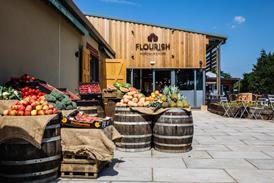
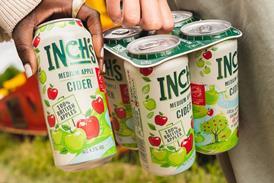






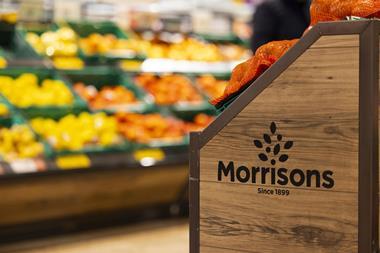


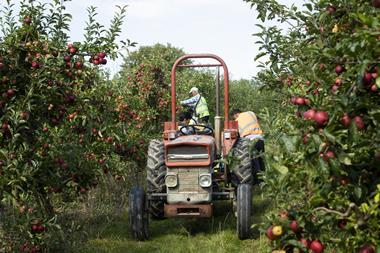


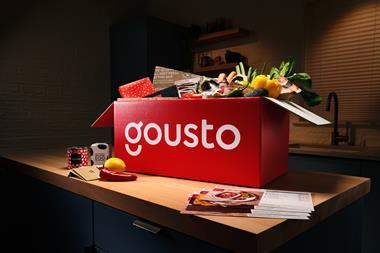
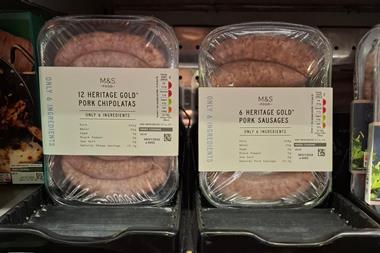
No comments yet